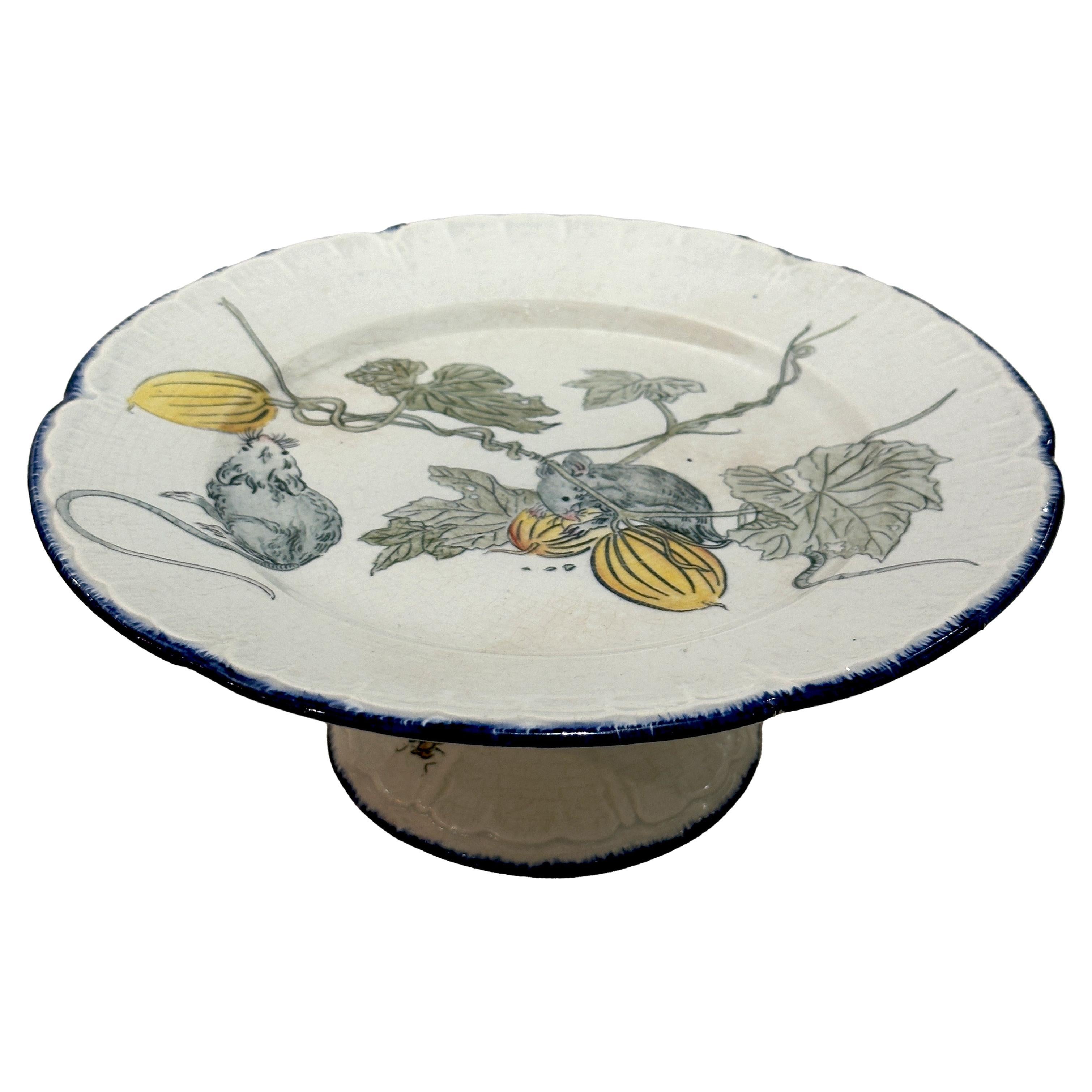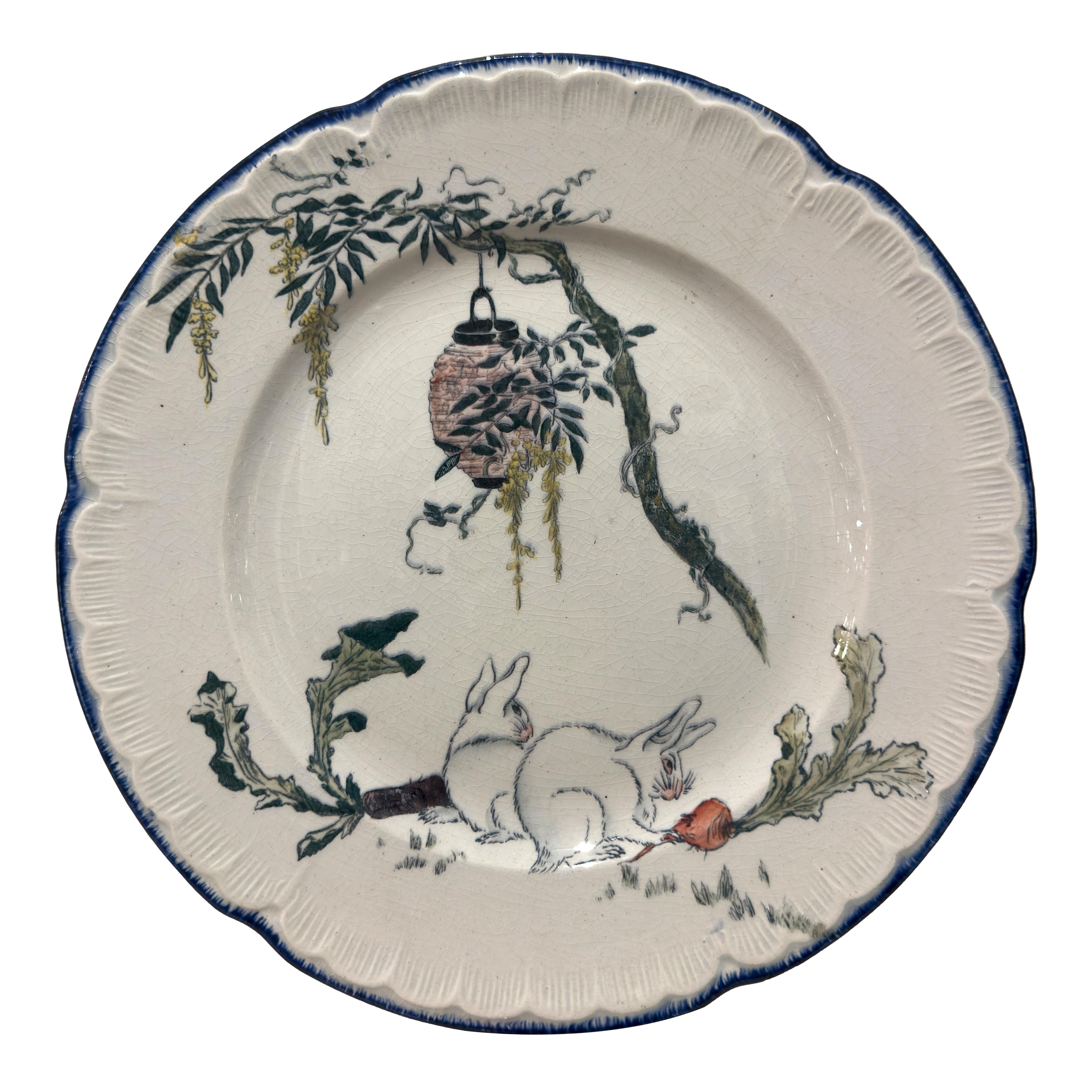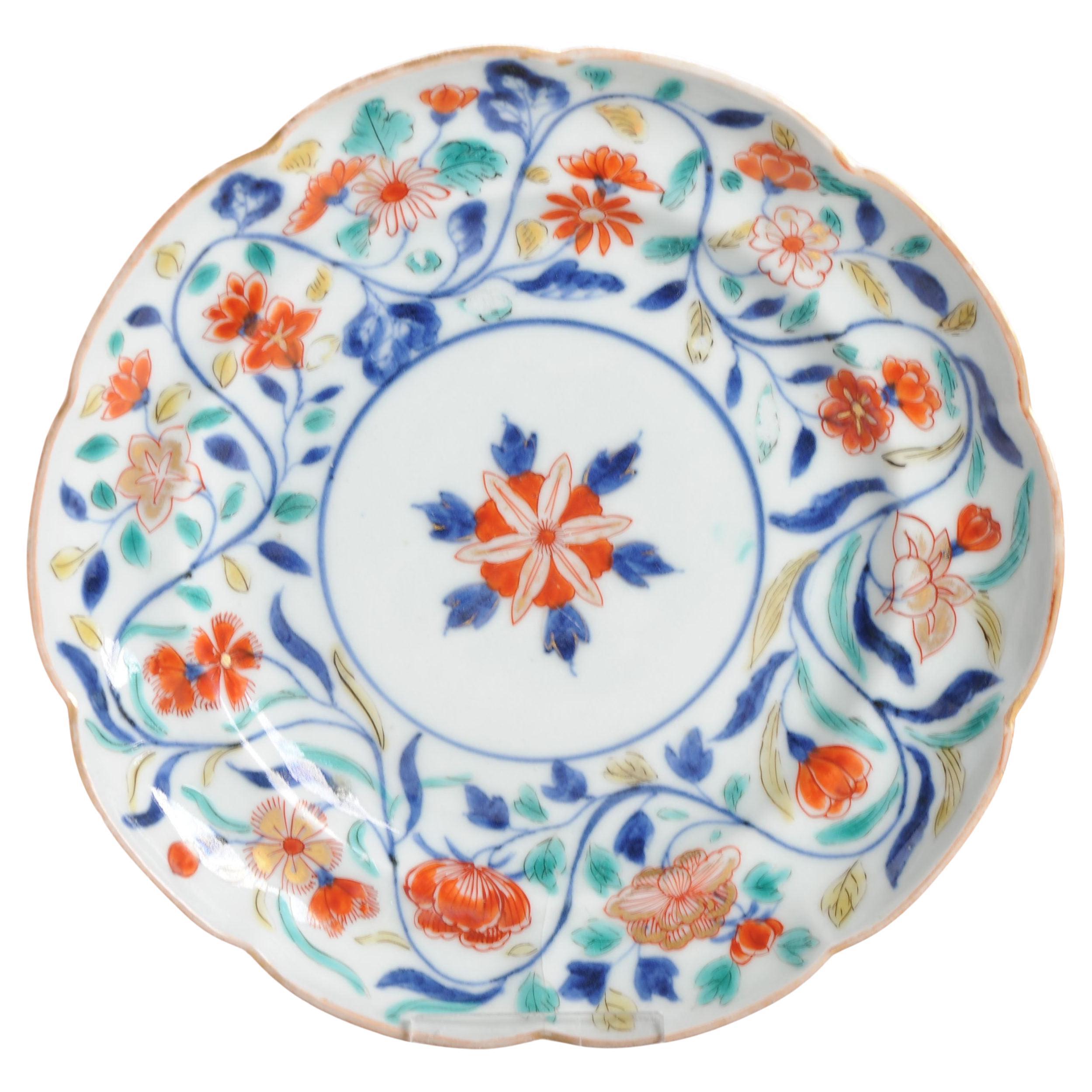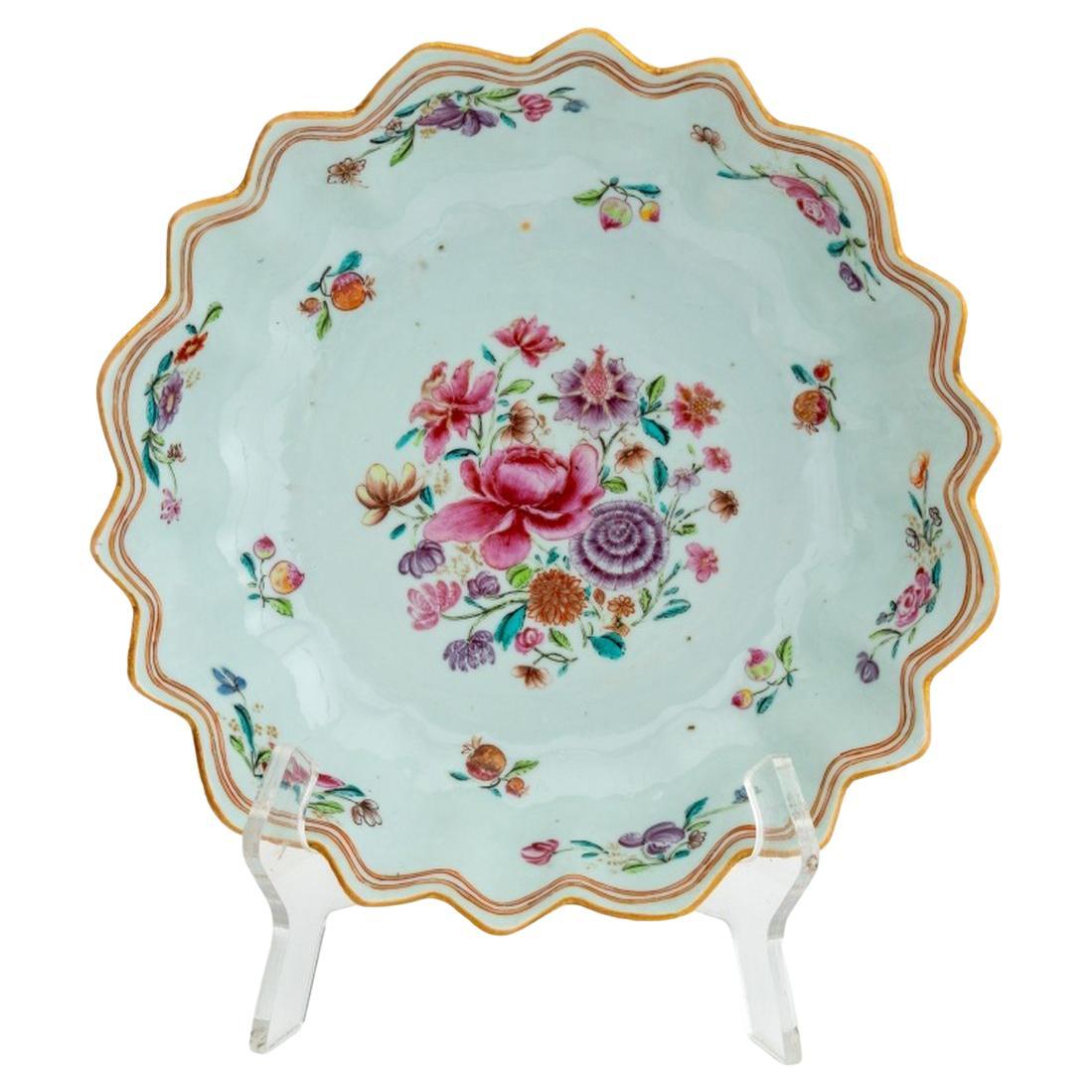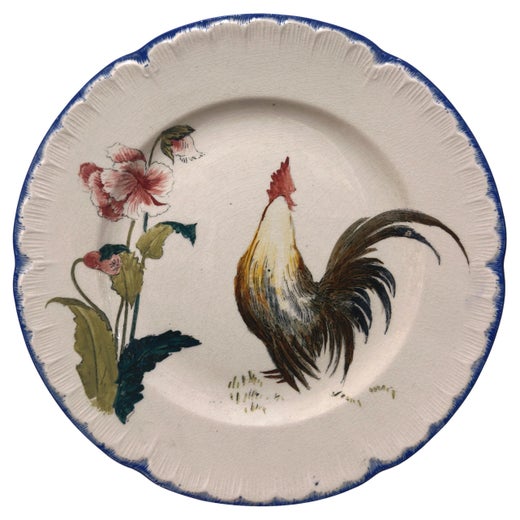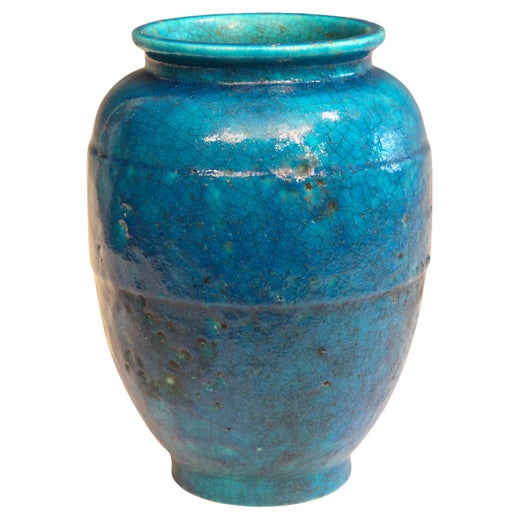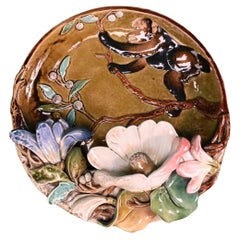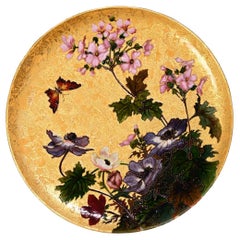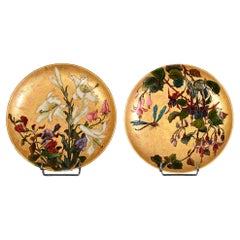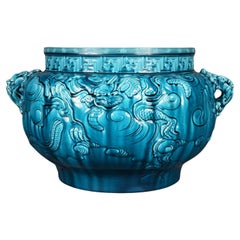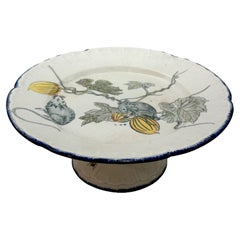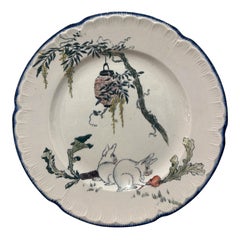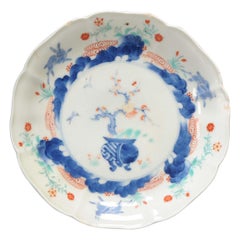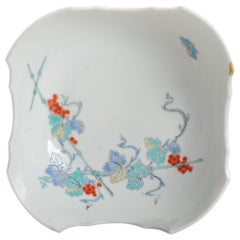Edmond LACHENAL for L'ESCALIER DE CRISTAL, Bowl decorated with flowers
About the Item
- Creator:Edmond Lachenal (Artist),L'Escalier de Cristal (Retailer)
- Dimensions:Height: 3.55 in (9 cm)Diameter: 12.6 in (32 cm)
- Style:Japonisme (Of the Period)
- Materials and Techniques:Earthenware,Enameled
- Place of Origin:
- Period:
- Date of Manufacture:Circa 1890
- Condition:
- Seller Location:SAINT-OUEN-SUR-SEINE, FR
- Reference Number:Seller: 133841stDibs: LU7662240349222
L'Escalier de Cristal
Dating back to the Bourbon Restoration in France and the reign of Napoleon Bonaparte, l’Escalier de Cristal (the Crystal Staircase) was founded by Madame Veuve Désarnaud as the first company to offer decorative objects made from crystal and gilded bronze. The firm was located in the Palais Royal in Paris, opposite the Louvre. It grew through a series of owners to become the gold standard for reproductions of 18th-century furniture — so perfect they were often mistaken for originals.
Désarnaud won numerous awards for her creations, including a gold medal at the 1819 Paris Exposition des Produits de l’Industrie Française for a dressing table featuring her signature bronze-crystal combination. A tailor named Boin bought the company around 1830; he in turn sold it to Pierre-Isidore Lahoche in 1840. Lahoche’s son-in-law, Émile Pannier, joined in a partnership in 1952 before Émile’s sons took over in 1885, establishing Pannier Frères. The company ceased commercial production in 1923.
Starting as early as the 1860s, there was a growing appetite for Japanese-style furniture, thanks in large part to the Japanese pavilion at the International Exposition of 1867. Henry Pannier reimagined some of the company’s designs to meet this new demand. The stylized furniture was a huge success and earned the company many awards, including the gold medal at the 1900 Paris Exposition Universelle. Others who contributed to this stylistic trend included French artist Émile Gallé, French glassmaker and ceramicist François-Eugène Rousseau, French furniture designer Louis Majorelle and French cabinetmaker Gabriel Viardot.
Henry Pannier made a constant effort to sketch each object the company sold and record it in his notebooks. Over 50 years, he recorded 2,800 furniture designs, each with its own name, date of sale and price. On some pieces, l’Escalier de Cristal signed the models, adding a layer of authenticity and distinction for today’s collectors.
Museums around the world have collected pieces from l’Escalier de Cristal, including the State Hermitage Museum in Saint Petersburg, the Musée d'Orsay in Paris and the Corning Museum of Glass in New York.
On 1stDibs, find a collection of l’Escalier de Cristal decorative objects, vases, desk accessories and more.
Edmond Lachenal
One of France’s most influential ceramists, Edmond Lachenal contributed significantly to the development of Art Nouveau. His poor beginnings in Paris led to an apprenticeship at age 12 with a local potter. In 1870, he began working in the studio of the leading ceramist, Theodore Deck.
Lachenal was a quick study and by 1873, he had demonstrated considerable talent to be appointed Director of Decoration in Deck’s studio as well as receiving an Honorable Mention at the World’s Fair in Vienna.
By 1881 Lachenal had opened his studio with his wife and fellow ceramist, Anne Le Cloarec, in Paris Auteuil neighborhood where there was a high concentration of ceramic production and artistic exchange. He subsequently moved his studio production outside of Paris; however, his impact on the artistic capital only increased with time. He won gold medals there in 1889 and 1900 at the Expositions Universelle.
By the early-1900s, large exhibitions of his work were held at the Österreichisches Museum fur Angewandte Kunst in Vienna and Munich and Louis Majerelle’s new Paris showrooms at the former site of Bing’s Maison de l’Art Nouveau. It was his breadth and range that set him apart from other contemporary artists working in the field. He worked in faience and stoneware, and he collaborated with sculptors to produce ceramic versions of their work. His oeuvre included applied experimental decorative ceramic styles as well as masterful sculpted organic models which reflected the evolving trend of Japonisme.
Lachenal’s creative solutions of utilizing hydrofluoric acid to remove the outer layer of glazes to create a velvety matte finish became his hallmark email mat veloute. As a harbinger and master of the Art Nouveau style, Lachenal’s ceramic work moved french ceramics from an appreciative replication of the natural world influenced by the arts from Japan to a fully actualized aesthetic in which artistic process and form expressed these higher laws found in nature. Lachenal leaves an incredible legacy.
Find Edmond Lachenal vases and other decorative objects on 1stDibs.
(Biography provided by Galerie Fledermaus)
- ShippingRetrieving quote...Shipping from: SAINT-OUEN-SUR-SEINE, France
- Return Policy
More From This Seller
View AllAntique Late 19th Century French Art Nouveau Ceramics
Ceramic
Antique 1880s French Napoleon III Decorative Dishes and Vide-Poche
Ceramic
Antique Mid-19th Century French Napoleon III Decorative Dishes and Vide-...
Ceramic
Antique Late 19th Century French Japonisme Ceramics
Faience
Antique Late 19th Century French Japonisme Tea Sets
Faience
Antique 1860s French Renaissance Revival Vases
Bronze
You May Also Like
Antique Late 19th Century French Japonisme Tableware
Ceramic
Antique Late 19th Century French Japonisme Tableware
Ceramic
Antique 18th Century Japanese Decorative Dishes and Vide-Poche
Porcelain
Antique Early 18th Century Japanese Decorative Bowls
Porcelain
Antique 17th Century Japanese Edo Decorative Dishes and Vide-Poche
Porcelain
Antique Mid-18th Century Chinese Chinese Export Ceramics
Porcelain
